I have just returned from Yaounde, the Capital of Cameroon in Central Africa. Cameroon is a country with extensive forest resources, and it is a member of the Central African Forest Commission, COMIFAC. Since 2002, Cameroon is also a member of the International Network for Bamboo and Rattan – INBAR. In 2013, Cameroon and INBAR signed a Memorandum of Understanding to accelerate the promotion of bamboo and rattan in the country, and to work together towards a bamboo and rattan programme.
Last year, we agreed to co-host a bamboo and rattan workshop in Yaoundé as an expression of the MoU, and this was postponed to 2016, after recruiting Rene Kaam from Cameroon in the INBAR Headquarters in Beijing. During the discussion of the details of the workshop, we realised that this was rapidly becoming more than just a workshop, and in the end it was officially opened on Thursday 11 August 2016 as the Regional Conference on Bamboo and Rattan. The conference had three key sessions, dealing respectively with construction, land restoration and value chain development. The sessions involved speakers and participants from 16 other INBAR Member States and a number of international organisations.
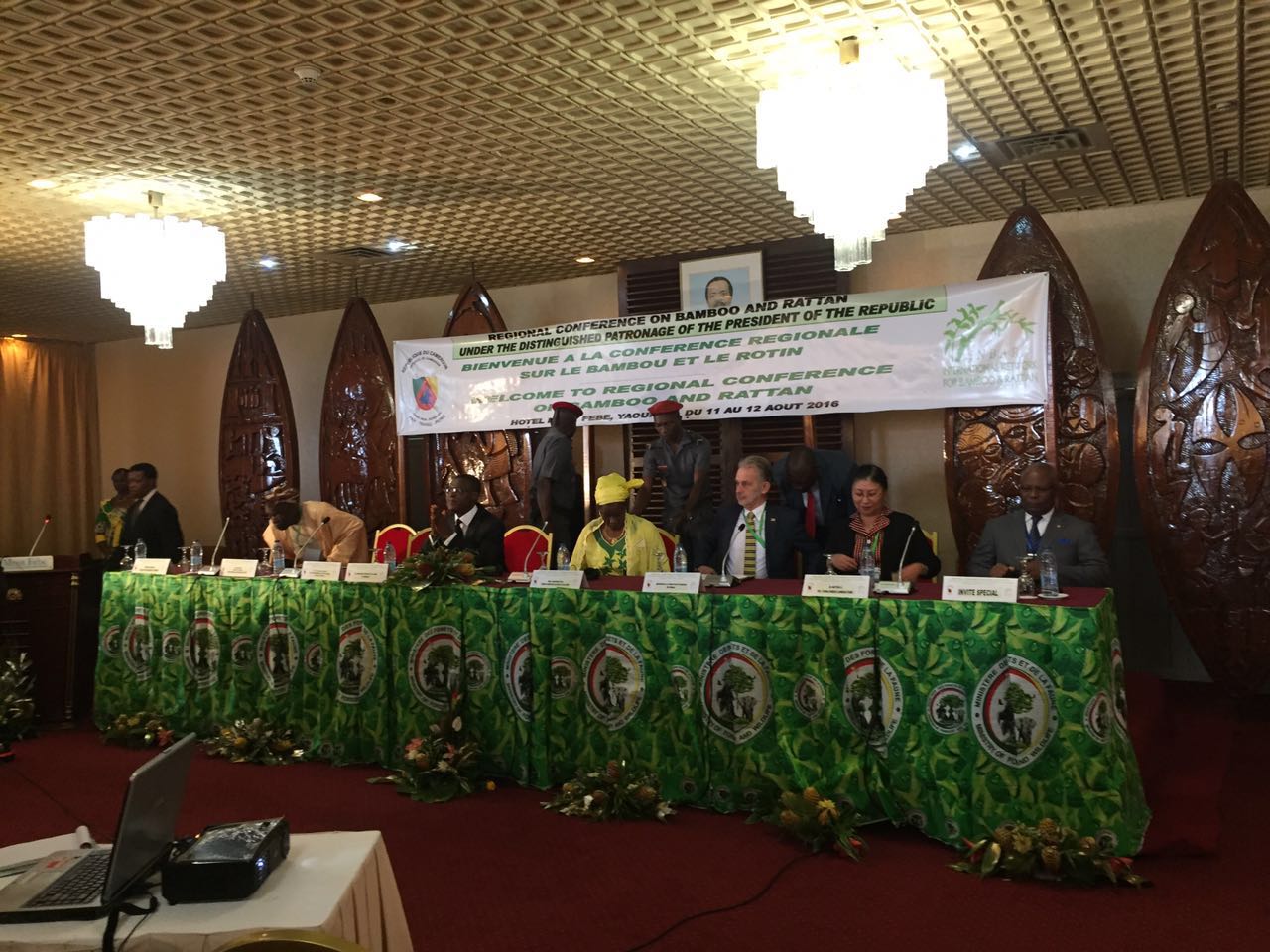
The Conference was formally opened by HE Ngole Philip Ngwese, Minister for Forestry and Wildlife (http://www.minfof.cm/), and we listened to a key-note speech from the Director of Forestry of Nigeria, Philip O. Bankole, on behalf of HE Minister Amina Mohammed. Minister of Environment of Liberia, HE Anyaa Vohiri unfortunately arrived after the opening ceremony, due to cancellation of her flight, but she gave her key-note speech during the closing ceremony. The Secretary of State for Forestry and Wildlife of Cameroon and the Ambassador of Cameroon to the People ’s Republic of China also attended the opening ceremony, and Dr Li Nuyun represented the China Green Carbon Foundation (http://www.thjj.org/en/), one of the sponsors of the Conference. I spoke on behalf of INBAR.
Prior to the Conference, INBAR had organised training for some 70 local people, including a group of mayors. They worked in three groups, each focusing on different aspects of the value chain. This included training in manufacturing of handicrafts, and Master Chen from Sichuan in southern China helped to introduce bamboo as a possible raw material for weaving.
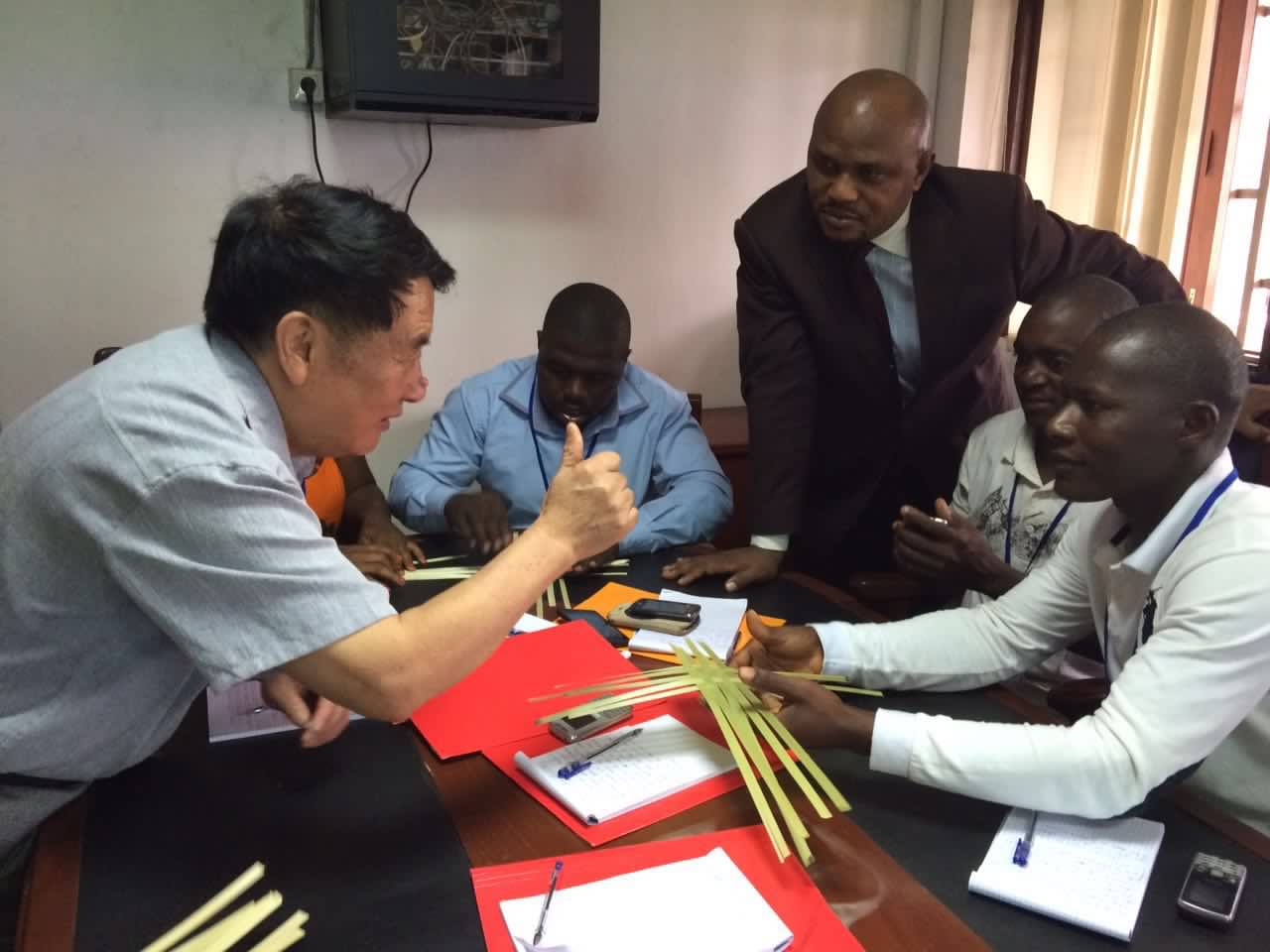
Master Chen explaining how to make a bamboo weaving
INBAR advisor and project manager of the IFAD-funded bamboo for livelihoods project in Ethiopia, Madagascar and Tanzania, Dr Jayaraman Durai, provided advice and guidance about management of bamboo plantations, and general inputs about the value chain. There are several bamboo species in Cameroon, and there are bamboo groves throughout the country, but there is room for more plantations. Durai provided advice on how to plant new bamboos and how to make sure they flourish.
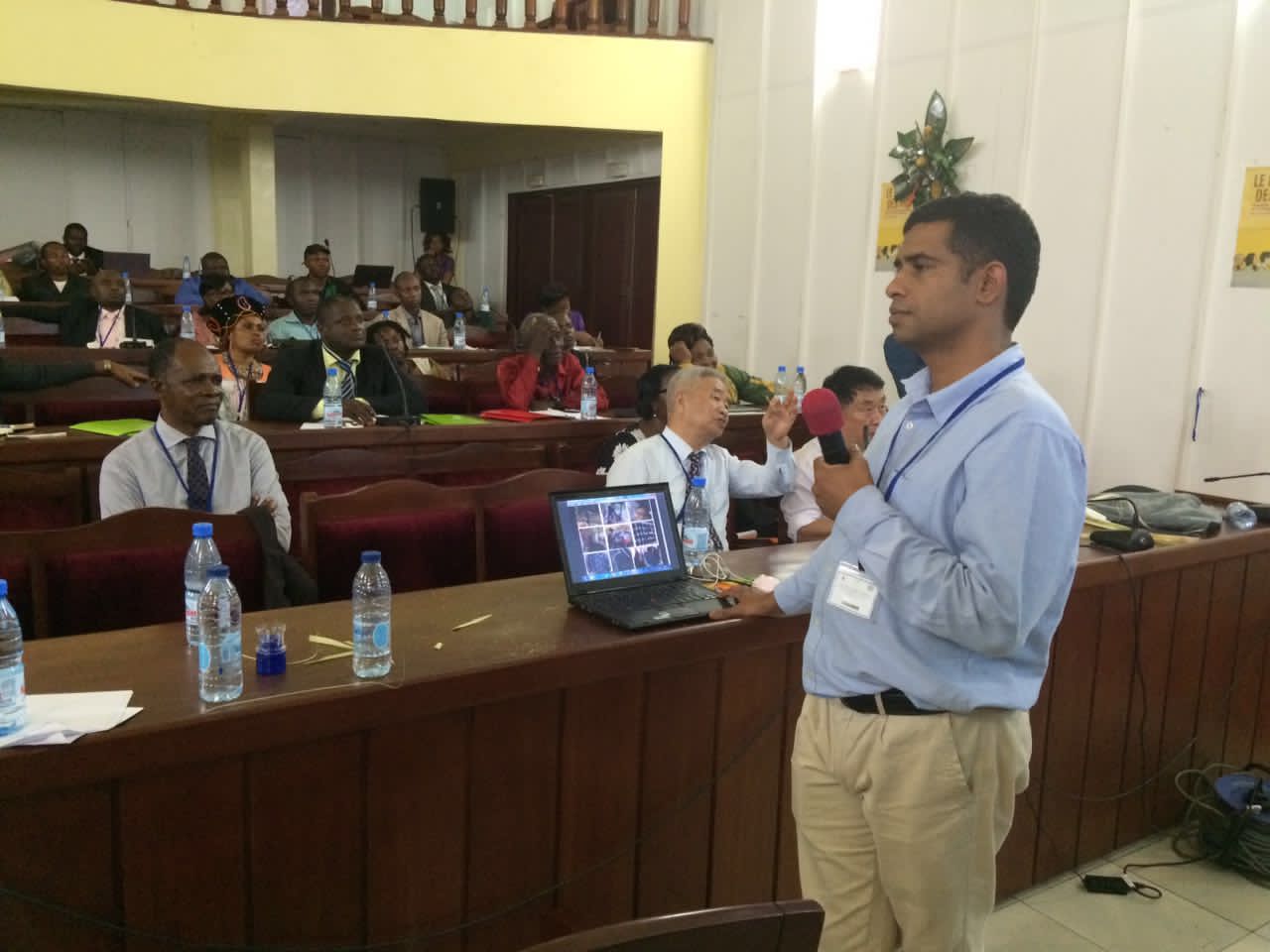
Dr Jayaraman Durai teaching plantation management
Professor Zhu, INBAR Fellow for Life, shared his extensive knowledge about bamboo and rattan and we had two trainers from Peru to provide advice about modern construction methods with bamboo. All this was coordinated by INBAR Training Coordinator Ms Jin Wei.
During the actual Conference, we were extremely fortunate to have the inputs from Dr Li Nuyun, the Secretary-General of the China Green Carbon Foundation (CGCF – http://www.thjj.org/en/). CGCF is the department in the Chinese State Forestry Administration that is responsible for climate change mitigation, and they were one of the sponsors of the conference. They have developed methodologies to count carbon in forests in China, and this includes a method to deal with bamboo. It is currently the only method available in the world to measure CO2 in bamboo, and Dr Li explained how we can apply this methodology in Cameroon.
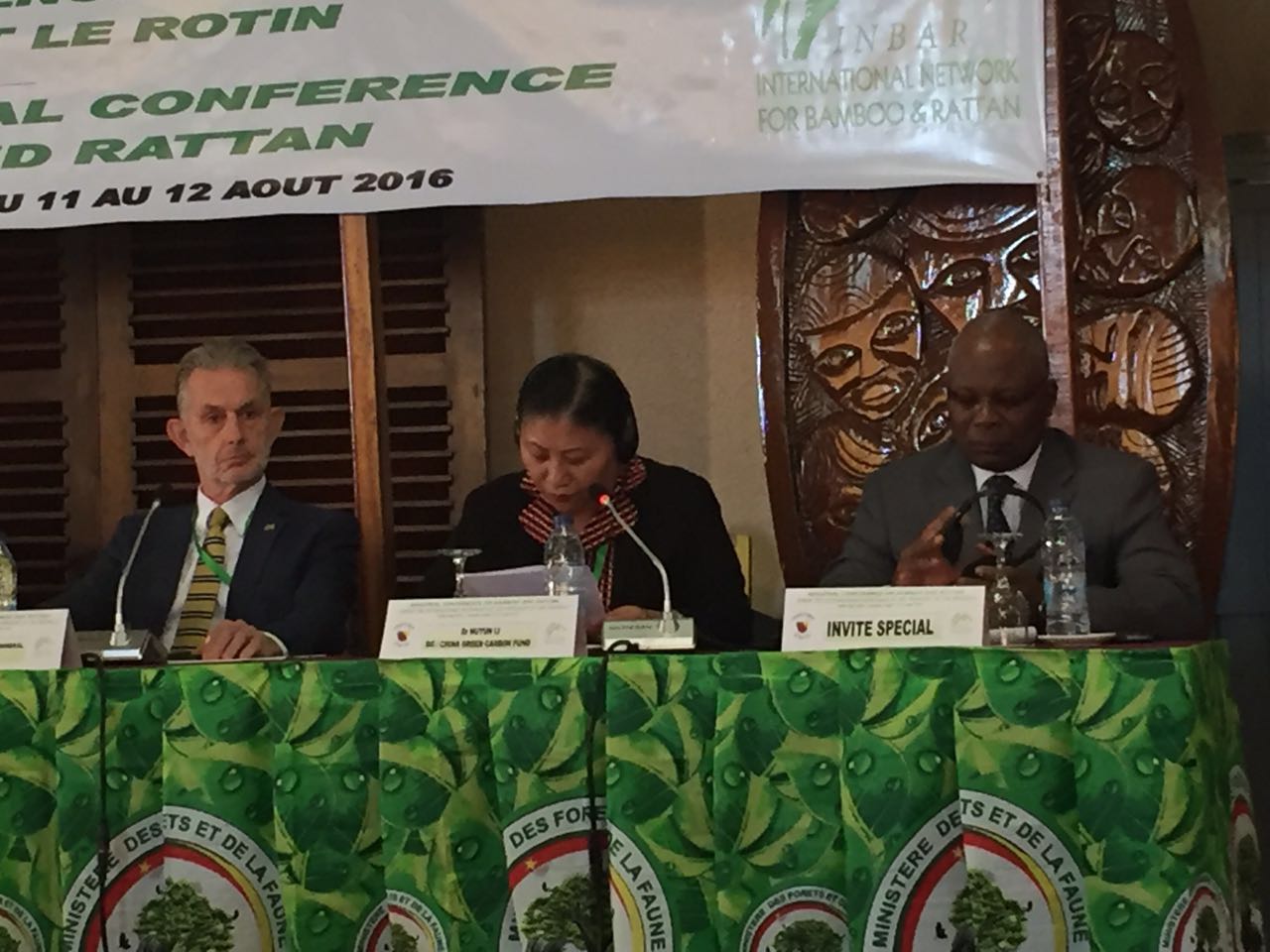
Dr Li Nuyun, China Green Carbon Foundation
While I was in Yaoundé, I had a series of very productive meetings, with a range of policy makers, including HE Dr Joseph Dion Ngute, Minister Delegate for External Relations, HE Ms Ebelle Etame Rebecca, Secretary-General of the Ministry of Scientific Research and Innovation and Ms Marie Madeleine Nga, National Coordinator of the National Community Driven Development Programme in the Ministry of Economy, Planning and Regional Development. My meetings culminated in a very engaging discussion with HE Prime Minister Philemon Yang. The Prime Minister comes from an area in Cameroon that is rich in bamboo resources, and he told me that traditionally houses in this part of the country are mainly constructed from bamboo. He told me that the method of construction of the walls in a compound illustrates the tribal background of the family. He also made the point that bamboo is particularly useful for beehives, as the hollow stems provide insolation to keep the swarm warm.
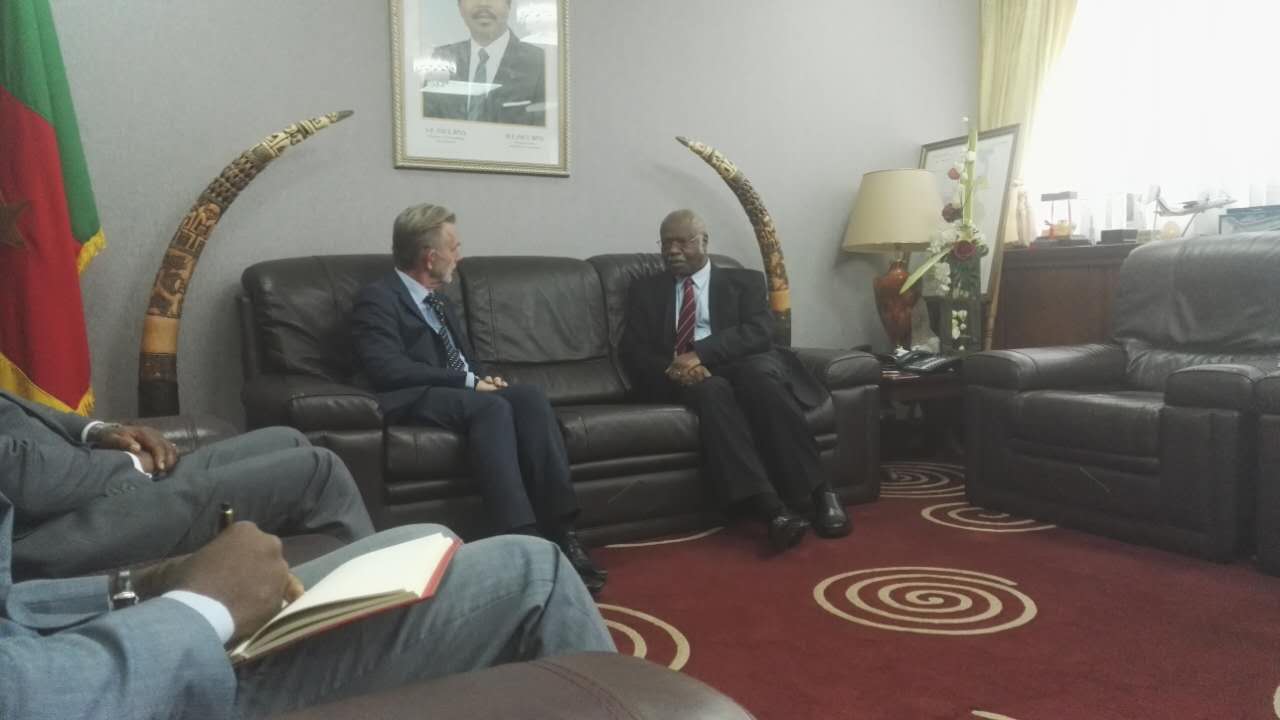
Discussion with HE Prime Minister Yang
I also met the Minister for Environment, Nature Protection and Sustainable Development (http://www.minep.gov.cm), HE Hele Pierre. Minister Pierre admitted that he mainly thought about bamboo as a commodity, but he had not given full recognition to the many ecosystem services that living bamboo provides. We explained that biodiversity conservation, renewable energy, erosion control, landscape restoration and climate change mitigation are all areas where bamboo and rattan can play a role. In this respect, Minister Anyaa Vohiri from Liberia invited Cameroon to join the Gaborone Declaration for Sustainability in Africa (GDSA – http://www.gaboronedeclaration.com/). GDSA is looking for ways to help countries in Africa account for the natural capital that they possess, and bamboo is one aspect that could be used as an example.
I informed Minister Pierre that INBAR is Observer to the United Nations Framework Convention on Climate Change (UNFCCC), the United National Convention to Combat Desertification (UNCCD) and the Convention on Biological Diversity (CBD), and we agreed that there are clear areas for collaboration in the field of ecosystem management and nature conservation
Minister Pierre was most impressed with the latest innovations of the Chinese bamboo industry, and gratefully accepted a radio made from bamboo.
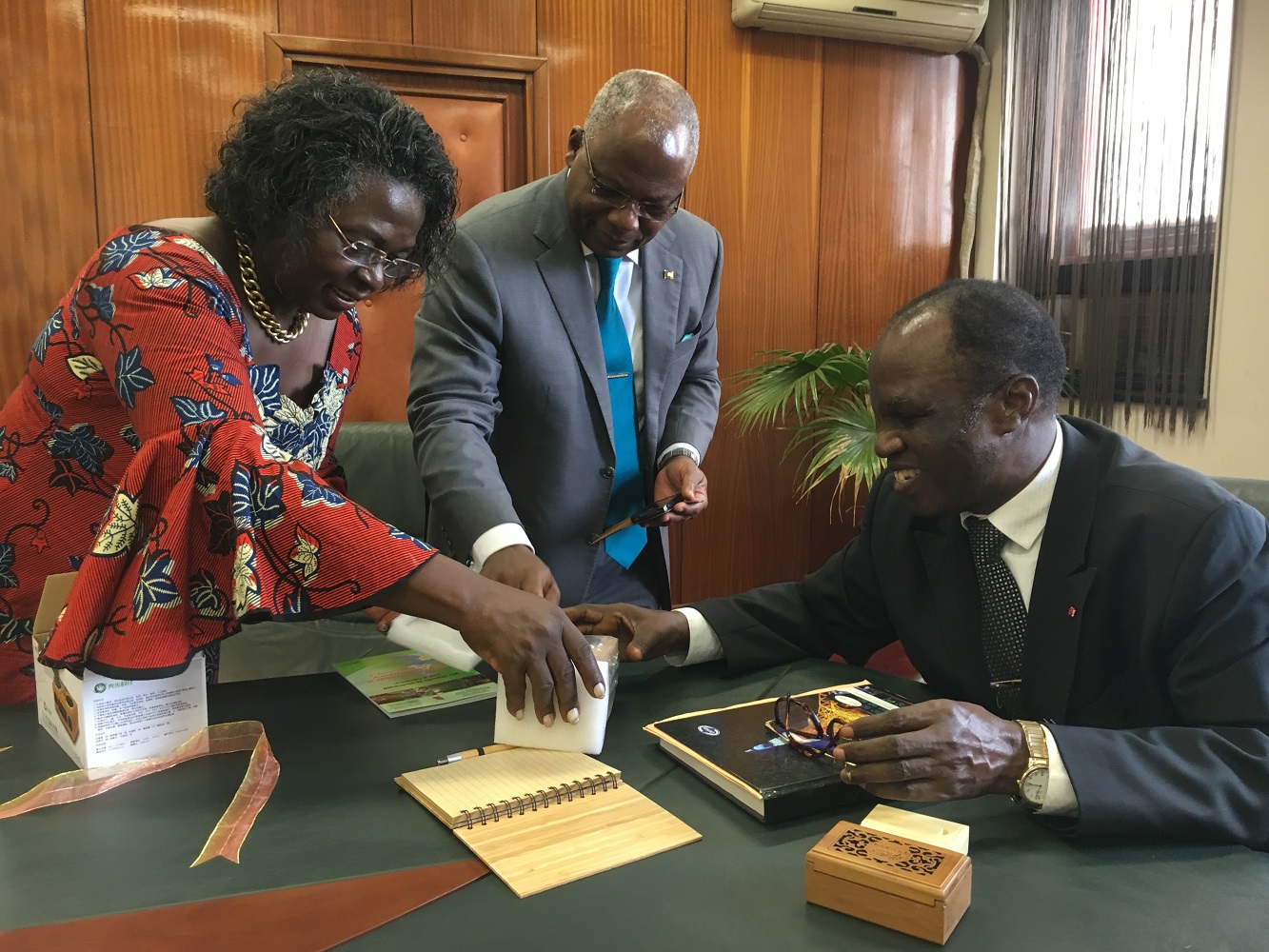
HE Minister Hele Pierre admires bamboo products
All the discussions came the same point: Cameroon wants to develop a national bamboo and rattan development programme, and Minister Ngole Philip Ngwese stressed that this will be the overwhelming result of the conference and associated meetings. This programme will include policy discussions, a capacity building programme, an awareness and publicity campaign and a series of demonstration sites to show potential investors what can be achieved. I confirmed the willingness of the INBAR Secretariat to help develop this programme for Cameroon during the closing session of the conference.
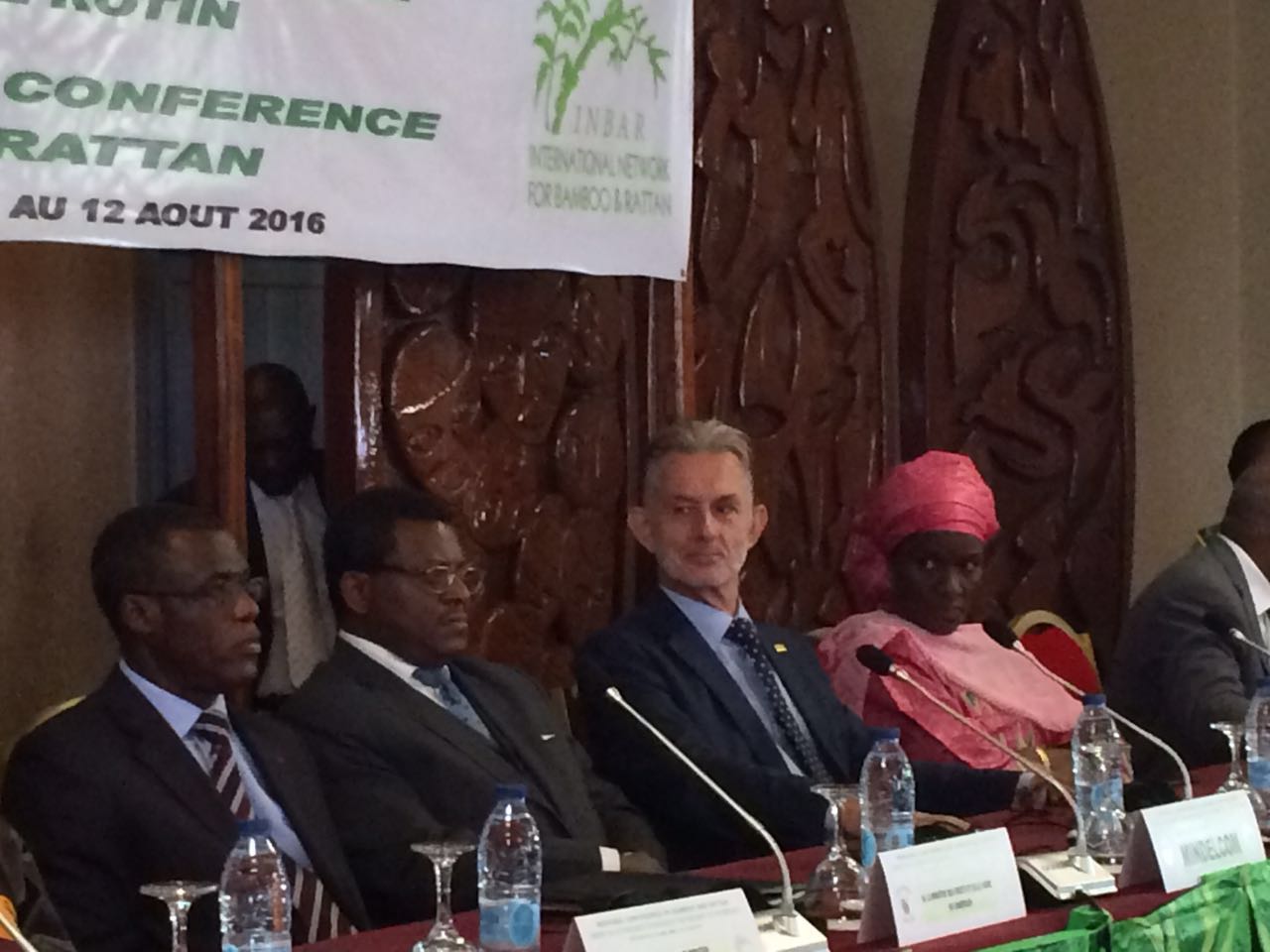
Minister for Forestry and Wildlife, Ngole Philip Ngwese; Minister Delegate for External Relations, Dr Joseph Dion Ngute; INBAR Director-General Dr Hans Friederich and State Secretary for Forestry and Wildlife at closing ceremony
The conference also provided lots of other opportunities for collaboration and future joint action. I had meetings with the national office of the International Fund for Agricultural Development (IFAD) and the Canadian High Commission in Cameroon to discuss regional initiatives. Minister Vohiri from Liberia and I discussed ways to implement the bamboo roadmap that INBAR has helped to prepare for her country. Nigeria Director of Forestry Philip Bankole has proposed that we sign a Memorandum of Understanding to describe what INBAR and Nigeria can do to promote bamboo and rattan in Nigeria. INBAR has been invited by the Rwanda Ecologists Association ARECO-Rwanda-Nziza (http://arecorwandanziza.org) to a regional forest meeting in Kigale in December, to introduce bamboo into discussions about gender and forest management in the Congo Basin. Finally, Benin offered to work on a GEF project for bamboo cultivation and landscape restoration.
All-in-all, a very productive few days, which would not have been possible without the strong support of HE Martin Mpana, Ambassador of Cameroon to the People’s Republic of China. Ambassador Mpana has become a strong supporter of INBAR, and has been a key driver of this conference.
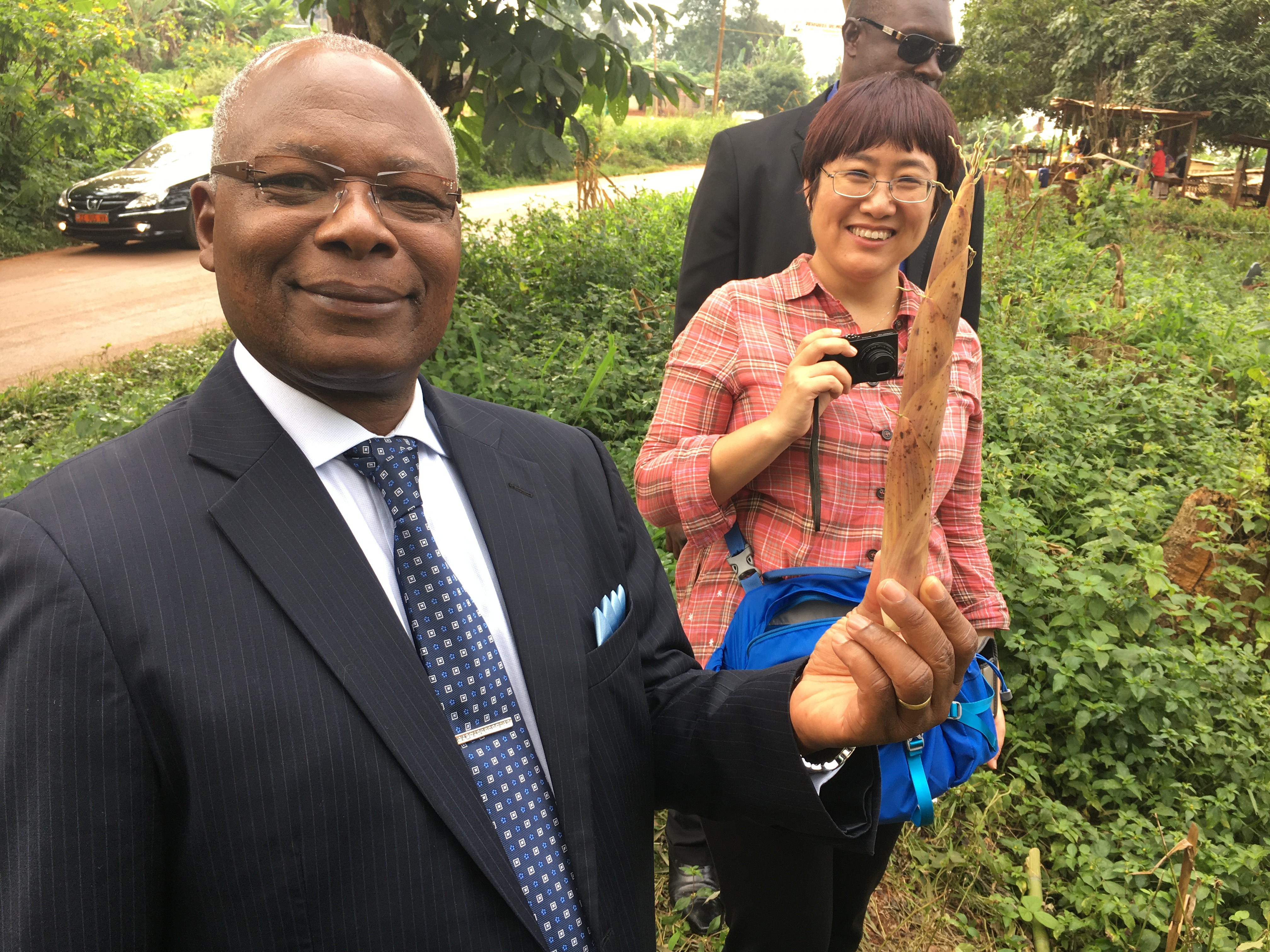
HE Ambassador Martin Mpana with bamboo shoot. Ms Jin Wei, INBAR Training Coordinator in the background

0 comments
Write a comment